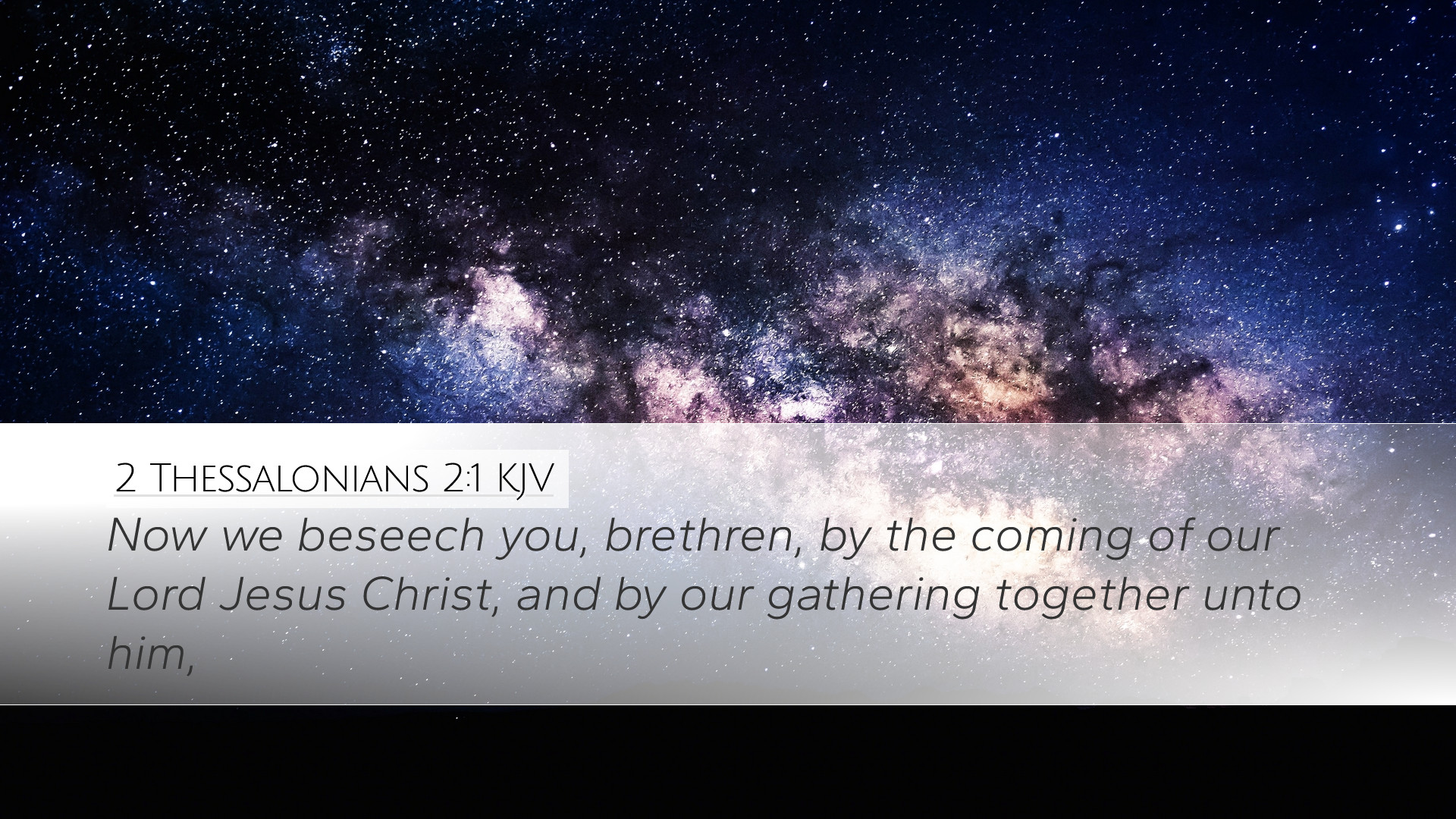Commentary on 2 Thessalonians 2:1
Verse: “Now we beseech you, brethren, by the coming of our Lord Jesus Christ, and by our gathering together unto him,” (2 Thessalonians 2:1, KJV)
Contextual Overview
The second epistle to the Thessalonians is primarily concerned with teaching and encouragement regarding the second coming of Christ. In this verse, the Apostle Paul appeals to the Thessalonian believers concerning the future events related to the Lord’s return. It is essential to understand this verse within its broader theological and pastoral context.
Exegesis of the Verse
In 2 Thessalonians 2:1, Paul uses the term “beseech,” which reflects his earnestness and pastoral concern (Matthew Henry). This term implies a plea, emphasizing the importance of the subject being addressed. Paul urges the brethren, thus addressing them with a term of endearment that signifies their shared faith and community.
The Coming of the Lord
Paul references “the coming of our Lord Jesus Christ.” This is a significant theological concept. According to Adam Clarke, “the coming” refers to the Parousia, which describes not only the literal return of Christ but also His continuous presence among believers. Paul emphasizes the certainty of Christ's return as an essential doctrine of the faith.
- Expectation: The early church lived with an eager expectation of the return of Christ, which shaped their daily lives and ministry.
- Assurance: The mention of Christ's coming serves to reassure believers of their future hope and the ultimate fulfillment of God's promises.
- Implications: The anticipation of His return encourages ethical living and perseverance in faith.
Our Gathering Together
The phrase “our gathering together unto him” indicates the collective nature of the faith community. Albert Barnes comments on this aspect by noting that the gathering refers to the assembly of believers with Christ, portraying a great hope of reunion for all who are in Christ. This speaks to the eschatological reality of the church, where believers are united with Christ and each other.
- Unity in Christ: The gathering signifies spiritual unity, a theme that Paul frequently emphasizes in his letters (Ephesians 4:3).
- Hope of Resurrection: It alludes to the resurrection of believers, which may take place upon Christ's return (1 Thessalonians 4:16-17).
- The Church's Role: This gathering highlights the role of the church as the body of Christ, living in expectation of His return.
Theological Implications
The theological implications of 2 Thessalonians 2:1 are profound. It invites believers to reflect on their relationship with Christ and each other. The passage asserts the active hope within the Christian faith — that believers are called not just to wait for Christ’s return, but to live victoriously and in community until that day arrives.
- Anticipation of Restoration: The church is called to anticipate the future restoration of all things in Christ (Acts 3:21).
- Challenge of Distraction: Many distractions can lead believers away from this hope; thus, Paul's reminder serves as a focus point (Matthew Henry).
- Encouragement for Endurance: The believers faced persecution, and the reminder of Christ's return motivated them to endure (1 Thessalonians 1:10).
Pastoral Application
For pastors and church leaders, this verse serves as a compelling reminder to teach and encourage their congregations about the second coming of Christ consistently. This doctrine should not be treated merely as an aspect of eschatology but as a living hope that informs daily conduct.
- Spiritual Vigilance: Leaders are called to stress the importance of spiritual vigilance and preparedness for Christ’s return.
- Community Engagement: Cultivating a sense of community in anticipation of the gathering with Christ and each other is essential for holistic growth.
- Modeling Faithfulness: Pastors should model faithfulness to the call of Christ, encouraging congregations through their own lives and service.
Conclusion
In summary, 2 Thessalonians 2:1 serves as a crucial reminder of the Christian hope in the return of Christ and the gathering of believers. Insights from public domain commentaries amplify the significance of this verse for both individual believers and the church. It calls for earnestness in awaiting Christ and living out a communal faith, encouraging believers to navigate challenges with the hope of His return.


